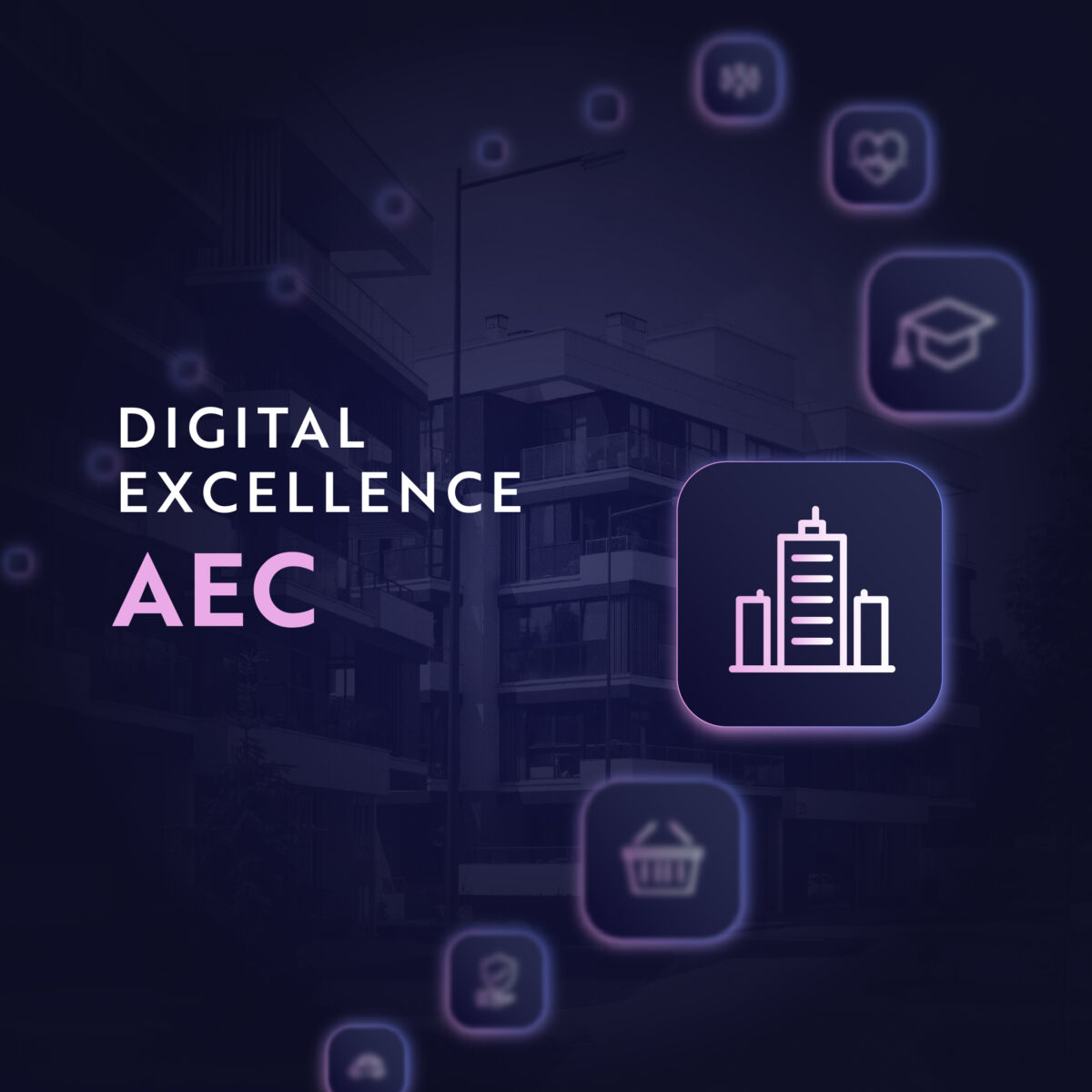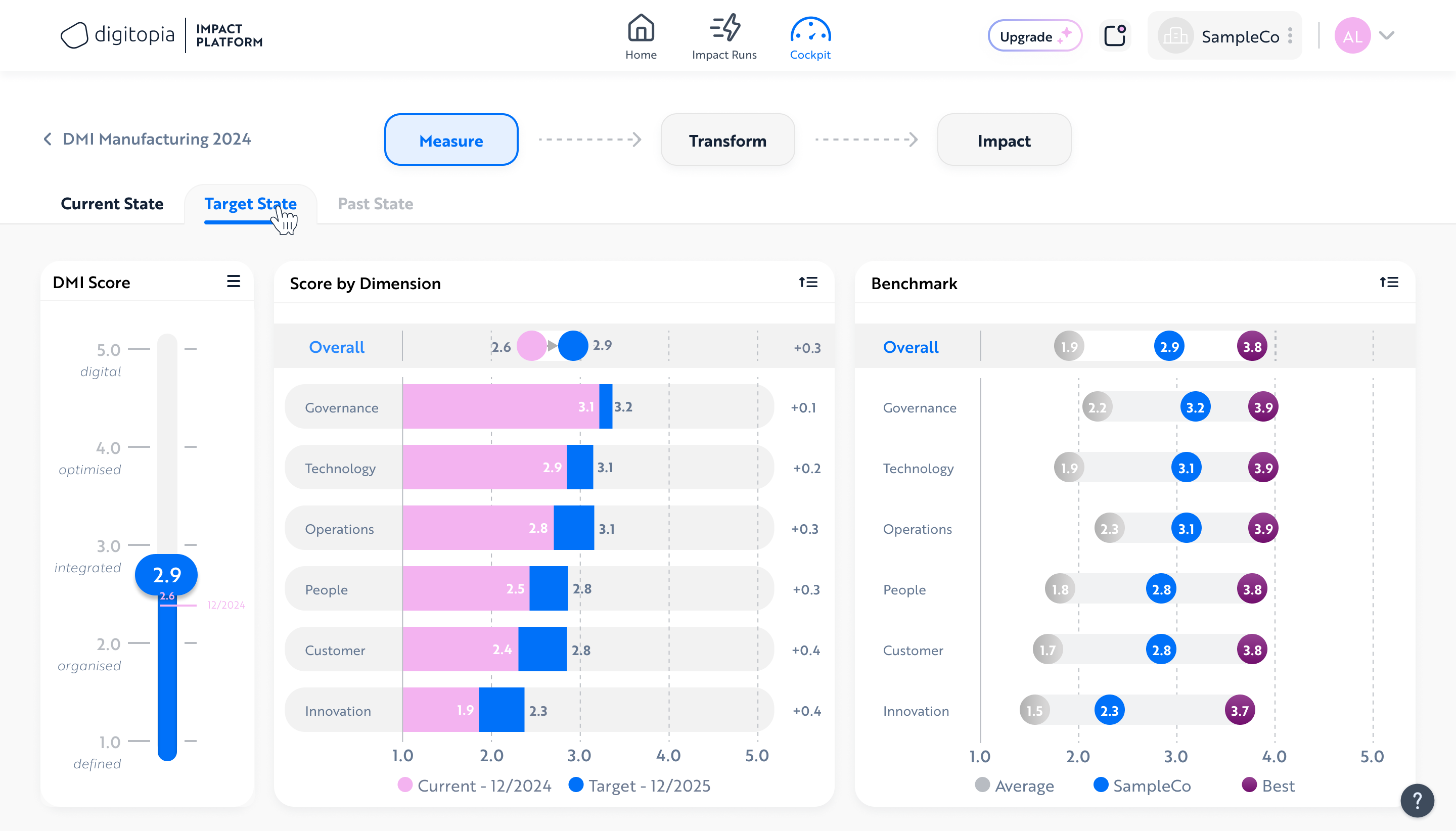
Key Technologies Transforming Digital Excellence in Real Estate and AEC
- Building Information Modeling (BIM):
- Integrated Design and Construction: BIM enables the creation of detailed 3D models that integrate design, construction, and operational data, improving collaboration and reducing errors.
- Lifecycle Management: BIM provides a comprehensive view of a building’s lifecycle, from design to demolition, supporting sustainability and efficient resource use.
- Augmented Reality (AR) and Virtual Reality (VR):
- Immersive Design Visualization: AR and VR technologies offer interactive walkthroughs and simulations, enhancing design visualization and client engagement.
- Virtual Training and Safety: VR provides immersive training experiences for construction workers, improving safety and skill development.
- Internet of Things (IoT) and Smart Buildings:
- Real-Time Monitoring: IoT devices enable real-time monitoring of building systems, optimizing energy use, maintenance, and occupant comfort.
- Smart Construction Sites: IoT sensors track equipment, materials, and personnel, enhancing site safety and productivity.
- Drones and Aerial Imaging:
- Site Surveying and Inspection: Drones provide aerial imagery and data for surveying and inspecting construction sites, improving accuracy and efficiency.
- Progress Monitoring: Drones track project progress and document construction milestones, enhancing project management and communication.
- Artificial Intelligence (AI) and Machine Learning:
- Predictive Analytics: AI-driven analytics forecast project risks, resource needs, and timelines, enabling proactive planning and decision-making.
- Design Optimization: AI algorithms analyze design options and recommend optimal solutions based on cost, sustainability, and performance criteria.
Benefits and Challenges of Digital Excellence in Real Estate and AEC
- Benefits:
- Enhanced Collaboration and Efficiency: Digital technologies improve communication and coordination among stakeholders, reducing errors and delays and enhancing project outcomes.
- Improved Design and Innovation: Advanced technologies enable more accurate design visualization and analysis, fostering innovation and creativity.
- Increased Sustainability: Digital tools support sustainable practices by optimizing resource use, reducing waste, and enhancing energy efficiency.
- Challenges:
- Technological Integration: Integrating new digital technologies with existing systems requires careful planning and investment, particularly for firms with legacy infrastructure.
- Data Security and Privacy: The collection and use of sensitive project data raise privacy concerns, necessitating robust data protection measures and compliance with regulations.
- Skill Gaps: The adoption of advanced technologies requires a workforce with new skills and expertise, highlighting the need for training and development.
Strong Use Cases
- BIM for Integrated Project Delivery:
- Construction firms like Skanska use BIM to improve collaboration and coordination across design and construction teams, reducing errors and enhancing project outcomes.
- Drones for Site Surveying:
- Engineering firms such as AECOM leverage drones for site surveying and inspection, improving accuracy and efficiency in project planning and execution.
- AI for Predictive Analytics:
- Real estate developers like Prologis utilize AI-driven analytics to forecast project risks and optimize resource allocation, enhancing decision-making and project success.
Digital Excellence in Real Estate: Compelling Case Studies
Skanska: BIM for Collaborative Design and Construction
Skanska has implemented BIM across its projects to enhance collaboration and coordination among design, engineering, and construction teams. By integrating design and construction data into a single platform, Skanska reduces errors, improves project outcomes, and delivers value to clients, demonstrating the transformative potential of BIM in the AEC industry.
AECOM: Drones for Enhanced Site Surveying
AECOM leverages drones to conduct aerial surveys and inspections of construction sites, providing accurate and timely data for project planning and management. By utilizing drone technology, AECOM enhances efficiency, reduces costs, and improves project accuracy, setting a benchmark for innovation in site surveying.
Main Recommendations
- Invest in BIM and IoT Technologies:
- Prioritize investment in BIM and IoT solutions to enhance collaboration, efficiency, and sustainability. Embrace data-driven decision-making to drive innovation and competitiveness.
- Enhance Design Visualization and Innovation:
- Leverage AR and VR technologies to offer immersive design experiences and foster creativity. Focus on improving client engagement and satisfaction through innovative solutions.
- Utilize the Digital Maturity Index (DMI):
- Conduct regular DMI assessments to evaluate digital capabilities, identify gaps, and develop strategic roadmaps for transformation. Use these assessments to guide decision-making and prioritize initiatives.
- Strengthen Data Security and Compliance:
- Implement robust data protection measures and ensure compliance with industry standards and regulations. Develop a comprehensive cybersecurity strategy to safeguard sensitive project information.
- Develop a Skilled Workforce:
- Invest in training and development programs to equip employees with the skills needed for advanced AEC technologies. Foster a culture of continuous learning and innovation to support digital transformation.
Elevate Your Business Value in Airport Operations with Digitopia’s DMI Assessment
Digital Maturity Index (DMI) offers a comprehensive evaluation of your digital capabilities, tailored specifically for the retail industry. With actionable insights and benchmarking against industry peers, you can identify key growth areas, chart a clear path to digital excellence.
Conclusions
The AEC and Real Estate industry is undergoing a digital transformation that presents both challenges and opportunities. By embracing digital technologies and focusing on collaboration and innovation, firms can unlock significant business value and maintain a competitive edge. Leaders must prioritize digital transformation initiatives and leverage tools like the Digital Maturity Index to guide their journey toward digital excellence in real estate. In doing so, they can drive sustainable growth and success while delivering exceptional projects in a rapidly evolving market.





















